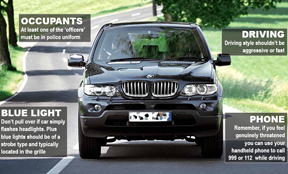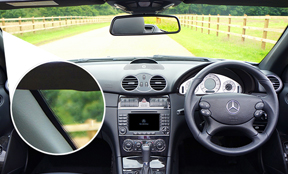
Electric vehicles (EVs) are lauded for their eco-friendliness, advanced technology, and cost efficiency. However, an often-overlooked issue is their vulnerability to damage from mice and other rodents.
Rodents targeting EVs is becoming a widespread concern, and understanding the risks, causes, and preventative measures is crucial for any EV owner.
 Did you know that mice and other rodents are attracted to EVs - and can
seriously damage them? (Image by Ralph from Pixabay)
Did you know that mice and other rodents are attracted to EVs - and can
seriously damage them? (Image by Ralph from Pixabay)
Why are mice and other rodents attracted to electric cars?
Rodents target EVs for several reasons, primarily linked to their nesting and feeding habits. Key factors include:
- Biodegradable Materials: Many EV manufacturers use eco-friendly materials like soy-based wiring insulation to align with sustainability goals. Unfortunately, these materials are attractive to rodents, who chew on them for sustenance or to wear down their ever-growing teeth.
- Warmth and Shelter: Electric cars, like traditional vehicles, generate heat when operating, providing a warm refuge for rodents. During cold seasons, EVs become even more appealing as rodents seek shelter from the elements.
- Design Factors: The compact, enclosed engine compartments in EVs can make ideal nesting sites. Unlike internal combustion engines, which may deter rodents with noise and vibrations, EVs are quieter, allowing rodents to move about unnoticed.
The risks of rodent infestations in EVs
Rodent activity in your EV can lead to severe and costly consequences, including:
- Electrical Damage: Chewing on wiring can disrupt critical systems, causing performance issues or rendering the car inoperable. Replacing damaged wiring is often expensive and time-consuming.
- Safety Hazards: Compromised wiring can lead to short circuits, increasing the risk of electrical fires.
- Contamination: Rodents often leave droppings, urine, and nesting materials, which can result in unpleasant odors and potential health risks.
How to prevent mice and other rodents from targeting Your EV
Being proactive is the best way to protect your electric car from rodents. Here are some effective preventative measures:
- Park in Secure Areas: Whenever possible, park your EV in a garage or enclosed space. Ensure the area is clean and free of debris that might attract rodents.
- Use Rodent Deterrents: Products like rodent-repellent sprays, ultrasonic devices, or peppermint oil can help deter rodents. Some manufacturers offer rodent-resistant tape for wiring.
- Regular Inspections: Frequently inspect your vehicle for signs of rodent activity, such as chewed wires, nests, or droppings. Early detection can prevent severe damage.
- Seal Entry Points: Check for and seal gaps or holes in your vehicle's engine compartment where rodents might gain entry.
- Avoid Leaving Food Nearby: Keep food and trash away from your car, as these attract rodents.
What to do if rodents have damaged your EV
If you suspect rodent damage in your electric car, take the following steps:
- Consult a Professional: Contact a mechanic experienced in EV repairs to assess and fix the damage.
- Clean and Sanitise: Remove any nests or droppings and thoroughly clean the affected areas to prevent health risks.
- Implement Preventative Measures: After repairs, strengthen your defence against future infestations.
Verdict
While rodents may not seem like a significant threat to high-tech vehicles, they can cause serious damage to electric cars. By understanding the risks and taking proactive steps, you can protect your investment and enjoy the many benefits of owning an EV without unwelcome guests under the hood.
More on electric vehicles and clean air
-
EVs and the London congestion charge
-
Electric van licence rules
-
One-pedal driving explained
-
Charging EVs in flats
-
EV charging at airports
-
Used EV prices and sales targets
-
EV range in hot weather
-
How to charge electric cars in the UK
-
Should you buy an electric car?
-
How to hire an electric car
-
Electric car licence and test rules
-
Most popular electric cars in the UK
-
EV charging in France for UK drivers
Subscribe for free motoring and travel news here - support independent journalism
Most read motoring content
Take a look at more of our top motoring-related content here...
-
How to spot a fake undercover police car
-
Do I need to pay the Dartford Crossing charge on Sundays?
-
Will I get a speeding ticket after being flashed
-
Do I need an international driving permit for France and Spain
-
Secret parking offences you're committing revealed
-
Alternative routes for beating jams on the M25
-
Alternative routes for the M1 motorway
-
Alternative routes for the M6 motorway
-
How old are my tyres - find out instantly here
-
What are the black dots on my windscreen for?
-
Are my sunglasses legal for driving?
Author: Pete Barden:
Twitter: @pete_barden
Pete Barden is a qualified journalist who has written and produced for publications including The Sun (thesun.co.uk), New Statesman Media Group, Whatcar? (Whatcar.com) Stuff Magazine (Stuff.tv), Fastcar Magazine (Fastcar.co.uk), Maxim Magazine and UK broadcast stations within the Heart network (Formerly GCAP). Pete specialises in motoring and travel content, along with news and production roles. You can find out more about Pete Barden on LinkedIn.











